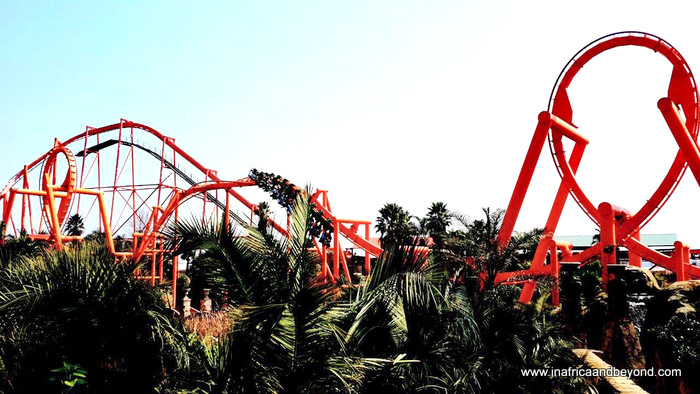5 Easy Facts About Johannesburg North Attractions Described
5 Easy Facts About Johannesburg North Attractions Described
Blog Article
Some Of Johannesburg North Attractions
Table of ContentsJohannesburg North Attractions Things To Know Before You BuyThe Best Guide To Johannesburg North AttractionsExcitement About Johannesburg North AttractionsAn Unbiased View of Johannesburg North AttractionsThe 5-Second Trick For Johannesburg North AttractionsJohannesburg North Attractions Fundamentals Explained
The city grew on the edge of the Witwatersrand Key Reef, a below ground stratum of gold-bearing quartz-silica empire that arcs for hundreds of miles below the Highveld - Johannesburg North attractions. Most of the gold mines in the city stopped operation in the 1970s, yet in its day the Witwatersrand gold market accounted for more than 40 percent of the globe's annual gold manufacturing.Johannesburg has a pleasant climate. The city enjoys concerning eight hours of sunshine per day in both winter season and summer season.
What rain the city gets drops practically specifically in the summertime, often in amazing late-afternoon electrical storms. Air air pollution positions a substantial problem, particularly in the winter season, when thermal inversions hinder the westward circulation of air from the Indian Sea. Air pollution is most severe in the densely cleared up Black townships on the city's periphery, where several residents still depend on coal for gas.

Getting The Johannesburg North Attractions To Work
The equilibrium of the city is inhabited by whites. Holiday accommodation varies in character and top quality.
Physical growth, although rather restricted by transport, continued rapidly as immigration to South Africa, and Johannesburg particularly, increased substantially. This problem was resolved in the 1930s when the car was presented in mass manufacturing to South Africa. Automobiles were, generally, restricted to the affluent, and permitted them to transfer to the north of the city and commute right into the centre.
The majority of bad suburbs were combined, with bad blacks and whites living together, although the affluent suburban areas were normally scheduled for whites.
The previous system of eleven phoned number regions was reorganised in 2006. Marshalltown, as seen from the top of the Carlton Centre. The M1 and M2 run behind the structures, and the southern residential areas expand past the highway border. The internal city of Johannesburg lies within the city's Region F. The number of individuals living in the internal city on an informal basis is unknown, as lots of are prohibited immigrants. The unemployment, education, and age accounts of the location are all unidentified, due to the difficulty of getting trustworthy info regarding the area.
Things about Johannesburg North Attractions
Centred on the CBD, the region consists of the residential areas of Yeoville, Bellevue, Troyeville, Jeppestown, and Berea to the eastern. To the west it infects Pageview (Johannesburg North attractions) and Fordsburg. There are tiny commercial areas to the south, such as City West-Denver and Benrose. Around 800,000 commuters go special info through the central city on a daily basis, and it operates as a local buying node for visitors from the southerly residential areas. Yeoville and Bellevue have a mix of home structures and single residential devices on small great deals. The area is situated on a hilly divide that ranges from east to west. One of the most conspicuous geographical attribute is Observatory Ridge, which is named for the large observatory situated on it. The leisure spaces are no more utilized, due to safety troubles.

Excitement About Johannesburg North Attractions
R. Tambo International Flight Terminal). The eastern suburban areas are some of the earliest locations of Johannesburg, there are large communities of Jewish and various other European backgrounds, the majority of the populace is English speaking. There are three web fairway in addition to a number of protected ridges with viewsites. There are numerous well-developed and up-market entertainment and purchasing locations in the east such as the Eastgate Shopping Center and the Greenstone buying centre.
Initially built to house male migrant employees, several have been enhanced as houses for pairs and families. The suburb was not historically enabled to develop work centres within the location, so virtually all of its residents are commuters to various other parts of the city.
Top Guidelines Of Johannesburg North Attractions
The N1 Western Bypass attaches the northern suburbs with the north-western suburbs. The suburbs in the north find this residential areas are mostly official, with no significant locations of informal housing, or housing that lacks an irreversible framework. Although this is a well established area, there is a pattern of land usage change from property to business, specifically along primary arterial roads and around established nodes.
The area is well linked to roadway networks, especially along the north-south axis developed by the M1 and N1. Roadways to the east and west are less well created, as there are no freeways travelling because direction. Towards the northern border of the city, the thickness of growth reduces, leaving huge areas of untaught land around Midrand.
The Main Principles Of Johannesburg North Attractions
The very first residential area to the north of the internal city is Parktown, which lies on a hill forgeting the central city and Hillbrow. It has lots of well-off locals and Edwardian-design mansions, as well as the Education and Medical campuses of the University of the Witwatersrand. The huge concrete Charlotte Maxeke Johannesburg Academic Healthcare Facility controls the horizon of Parktown.
Report this page